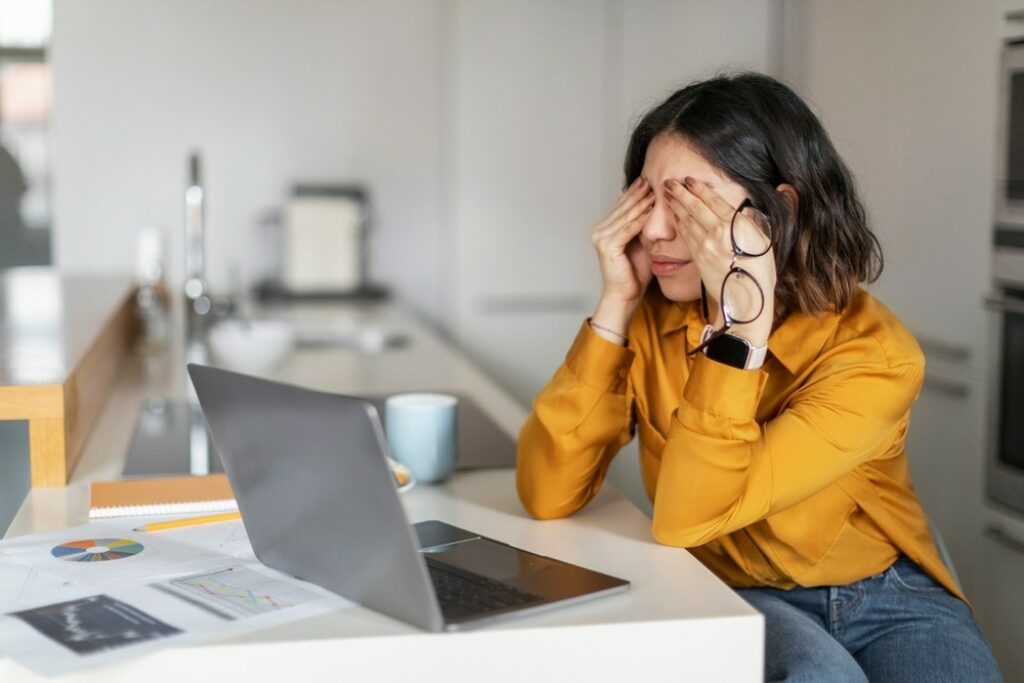
How To Heal A Strained Eye
Just like any other part of our bodies, our eyes get tired and sore if we overwork them for prolonged periods. This is especially true regarding screen use. Although smart devices, laptops and TV’s are safe in moderation, the eyes were not really designed to gaze at anything continuously.
Related Topics (Sponsored Ads):
In today’s predominantly digital age, many of us spend long hours staring at screens, leading to eye strain or what is medically known as “computer vision syndrome.” Eye strain can cause discomfort, fatigue, headaches and blurred vision, which makes it very difficult to stay focused. As a result, this leads to overall less productivity and reduced work quality. However, the good news is that there are several effective methods and techniques to alleviate eye strain and promote healthier, stronger eyes.
This article will provide instructions and valuable insights on how to effectively heal a strained eye, along with practical strategies for relieving eye strain and preventing future occurrences.

Understanding Eye Strain
Eye strain occurs when the eyes become tired due to extended periods of focusing on a single task, such as reading, using digital devices, or driving for prolonged periods. The most common symptoms of eye strain include dry eyes, blurred vision, headaches, and neck or shoulder pain. It is important to understand the causes of eye strain in order to effectively heal and prevent it.
Techniques for Immediate Relief
When experiencing eye strain, there are ways to provide yourself immediate relief. Here are some techniques that can help:
~ Take regular breaks: Every 20 minutes, look away from the screen and focus on a distant object for at least 20 seconds. This is also a great time to stretch and enjoy an activity that doesn’t involve a screen.
~ Blink frequently: Consciously blinking your eyes helps to keep them moist and well lubricated, preventing dryness and irritation.
~ Apply the 20-20-20 rule: After every 20 minutes of screen time, look at an object 20 feet away for 20 seconds. This technique helps to reduce eye fatigue and strain.
~ Use artificial tears: Over-the-counter artificial tears can help lubricate the eyes and provide relief from dryness and discomfort.
Lifestyle Changes and Prevention
Preventing eye strain is just as important as healing it. There are a number of key lifestyle changes and preventive measures you should consider to protect your vision. First and foremost, it’s crucial to have proper lighting – Ensure that the area where you work or read is well-lit and free from glare, along with adjusting the brightness and contrast of your digital devices if it’s too bright.
Secondly, set up an ergonomic working station – Position your computer screen at eye level, maintain a comfortable distance between your eyes and the screen, and use an ergonomic chair to support proper posture. In addition, it’s highly recommended to limit screen time by taking regular breaks from screen activities and engaging in other hobbies /activities that do not require screen use, such as music, art or exercising, or install an anti – glare / blue light screen filter to reduce eye strain.
Exercises and Relaxation Techniques
In addition to immediate relief and preventive measures, incorporating exercises and relaxation techniques into your daily routine can significantly alleviate eye strain as well. Here are some techniques to consider:
1. Eye exercises: Rotate your eyes in a circular or figure eight motion, look up and down, or shift your gaze from side to side. These exercises help to strengthen eye muscles and reduce strain.
2. Palming: Rub your hands together to generate warmth, then gently place your palms over your closed eyes. Relax and breathe deeply for a few minutes. This technique helps to soothe and rejuvenate tired eyes.
3. Eye massage: Using your fingertips, gently massage the area around your eyes in circular motions. This improves blood circulation and relieves eye strain.
The Role of Good Nutrition and Eye Supplements
Maintaining a healthy diet and incorporating specific nutrients can promote eye health and reduce eye strain. Omega-3 fatty acids should be on the top of your list. Found in fish, flaxseeds, and walnuts, these essential fatty acids help reduce dryness and inflammation in the eyes.
Next up are the various foods rich in essential vitamins, with an emphasis on A, C, and E, as well as antioxidants like lutein and zeaxanthin. All of these vital nutrients can protect the eyes from oxidative stress and promote overall eye health. Regarding eye supplements, be sure to first consult with an eye specialist to determine if lutein or bilberry extract are safe and suitable for your specific needs.
When to Seek Medical Help
In most cases, eye strain can be effectively relieved and prevented through the techniques mentioned above. However, if the symptoms persist or worsen, do not ignore it and seek medical help. An eye specialist can conduct a thorough eye examination and provide appropriate treatment options. For many people, a pair of prescription eyeglasses is often all that is needed to solve the problem.
Final Thoughts
It goes without saying that eye health is of paramount importance in order to function in day to day life, so if you’ve been experiencing any issues or discomfort with your vision, do not put it off. Take any steps necessary to improve it, as neglecting it can potentially lead to more serious complications and various eye diseases.




